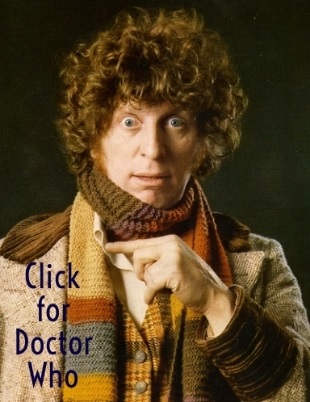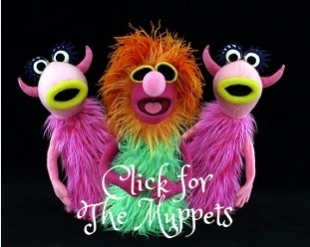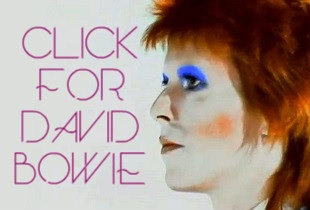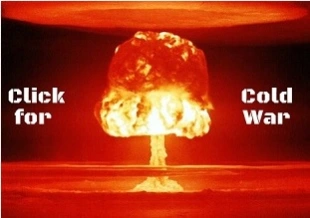Indy at 30: Like father, like son? ~ Indiana Jones And The Last Crusade (1989)/ Indiana Jones And The Kingdom Of The Crystal Skull (2008) – Review
.
Right then, peeps, here it is, this blog’s final foray in keeping up with the Joneses in celebration of Indy’s big 30. Yup, having gone behind-the-scenes of Raiders Of The Lost Ark (1981) and reviewing that very flick and its immediate sequel Indiana Jones And The Temple Of Doom (1984), it’s now time to close the Ark by sharing with you my thoughts on the saga’s (so far) last two entries, Indiana Jones And The Last Crusade (1989) and Indiana Jones And The Kingdom Of The Crystal Skull (2008). Yup, dust off the fedora, folks, because here we go again…
.
(Last Crusade) Directed by: Steven Spielberg; Starring: Harrison Ford, Sean Connery, Alison Doody, Denholm Elliott, John Rhys-Davies, Julian Glover, River Phoenix; Screenplay by: Jeffrey Boam; US; 127 minutes; Colour; Certificate: PG
~~~
So, five years on from the release of Temple Of Doom and adventure cinema’s duo supremo Steven Spielberg and George Lucas cracked the whip once more and served up a highly expectant public with another dose of Indy. In that half-decade, Lucas had (for now) left Star Wars behind and Spielberg had moved on to more ostensibly critic- and award-friendly fare as The Color Purple (1985) and Empire Of The Sun (1987); in short, both seemed to be growing up. Perhaps because of this then, it’s fair to say Last Crusade lacks some of the youthful vigour, unbridled pace and childlike wonder of its two predecessors, but it also possesses something they arguably lack, a real commitment to character-driven storytelling.
Now, don’t get me wrong, being an Indy flick, this ‘un certainly delivers those trademark genius (or, if you prefer, showing-off) touches of the early Spielberg. For instance, we have a tied back-to-back Indy and companion in a revolving fireplace moving from a fiery room to, maybe even worse, another room laden with villains, as well as a moment when the camera focuses on a chap replacing a car-wheel’s hubcap just as the vehicle itself speeds off. Yet, the real focus this time is on delving deeper into our hero’s back-story and his relationships with those close to him, arguably ensuring this movie is more grown-up than the previous two. Arguably.
First off, we’re offered an episode that tackles our protagonist’s ‘origins’ (so popular with adventure and comic book hero flicks nowadays) as the ill-fated River Phoenix essays an adolescent Indy in a circus-train chase, which neatly and wittily explains away the hero-to-come’s fondness for that lion-tamer’s whip, his aversion to snakes and where he got his fedora and leather jacket look – from a low-grade Indy-style adventurer, as it happens.
And from one ‘father figure’ of his past we move on to another – the real thing, Professor Henry Jones Sr, Indy’s dad, no less. For now the flick shows its true colours as the adult Indiana (Harrison Ford) sets out on an escapade that takes him from his Californian college, via Venice and an Austrian castle full of hidden corridors, to the deserts of Hayat in a bid both to rescue his pop from Raiders-esque nasty Nazis and find and lay claim to the legendary Holy Grail.
His dad turns out, of course, to be none other than Sean Connery (seriously, who could be more fitting as Indy’s pop than James Bond? Apparently, that thinking genuinely was behind Spielberg and Lucas’s casting of Connery). And this surely has to be Last Crusade‘s master-stroke. As Indy’s academic, priggish and formerly absent father, with whom the son has some serious unresolved issues, the Scottish thunderball delivers an outstanding against-type comic turn. His frequent rebuking of (‘Junior!’) and bickering with Ford (‘I should have mailed it to the Marx Brothers!’) is golden stuff; quite frankly, the film only hits top gear with his entrance a third of the way through. Indeed, second to 007 himself, this is probably the most enduringly popular role of Connery’s long, varied career – and rightly so.
It’s not all The Ford And Connery Show, though (despite how much fun they’re clearly having and, by extension, Spielberg’s having directing them). Indiana Jones wouldn’t be Indiana Jones without chases – and Last Crusade doesn’t disappoint. There’s a chase on motorbikes, one in speedboats, a lengthy tank-versus-horse set-piece in the desert and, best of all, the two Joneses in a byplane and then a car being pursued by Messerschmitts. The movie’s macguffin too (the biblical Holy Grail) is a classic – leading to an eerie, spooky and mystical finale – and, as mentioned, those Nazi villains (back after the controversial Indian Thuggee cultists of Temple Of Doom) do the business once again.
Although neither as sinister nor as threatening as they were in Raiders perhaps (despite Indy meeting Hitler – who’d have thought he was actually Mr Bronson off Grange Hill?), their presence is bolstered by Alison Doody’s love interest turning out to be a fascist-sympathising and memorable femme fatale – in spite of her being shunted down the supporting cast pecking order due to the film’s father-and-son theme and Connery’s casting. Successful too are the welcome returns of John Rhys Davies’s Sallah and Denholm Elliott’s Marcus Brody; Julian Glover’s ‘champagne villain’, Walter Donovan, proves a little flat, mind.
But, ultimately, it’s the Indy-and-his-dad aspect for which Last Crusade remains most memorable. And this is more than ensured by the flick’s more than satisfying climax, where both Joneses naturally and nattily realise that the real Holy Grail they’ve been hunting for throughout their journey has been something else entirely to the little cup from which Christ once drank; proof indeed that with Spielberg and Lucas at the helm, Indy has always been about going further than merely updating Saturday morning serials, but giving the audience exactly what it wants – and more besides.
.
(Crystal Skull) Directed by: Steven Spielberg; Starring: Harrison Ford, Shia Laboeuf, Karen Allen, Cate Blanchett, Ray Winstone, John Hurt, Jim Broadbent; Screenplay by: David Koepp; US; 122 minutes; Colour; Certificate: 12
~~~
It’s a sign of the controversy that, since its release, Indiana Jones And The Kingdom Of The Crystal Skull has generated among modern film fans that just yesterday emerged the news Harrison Ford has apparently called Shia Laboeuf, his co-star in said film, a ‘f*cking idiot’ for recently claiming he (Laboeuf himself, that is) ‘dropped the ball’ while making the movie.
You see, sincere Shia had informed the world that the notorious – and generally derided – moment in Crystal Skull in which he swings on a grapevine surrounded by monkeys and then attacks an enemy with his new simian pals may have been the filmmakers’ creation, but ultimately it was his responsibility to ‘sell it’, which apparently he did not. According to Ford, you don’t knock a film you’ve starred in, you sell it; but Laboeuf presumably feels fans ‘deserve’ an explanation.
But is an explanation necessary for that particular Crystal Skull moment? (For the record, not for me; it rather tickles yours truly – what can I say, like Sheldon in The Big Bang Theory, I like monkeys) And, by extension, does the film as a whole deserve all the criticism it’s garnered over the last three years? Is it really that bad a flick?
The answer, in my opinion, is a plain and simple no. Granted, after the 19-year wait for a new dose of Jonesian heroics, it wasn’t exactly a new Raiders that greeted filmgoers in the summer of 2008. And now in 2011, with the dust having settled somewhat, Crystal Skull‘s still very much in the original adventure’s shadow (and those of its first two sequels perhaps), but despite this I’ll happily state and maintain it’s not that bad a movie.
Much of the film fan antagonism to the flick, it seems to me, centres on what’s at the centre of the plotting – as it goes, not the movie’s macguffin, the psychic crystal skull of South America’s Akator/ El Dorado that the hero sets out to find (surely a pleasingly freaky, eerie, exotic piece of ancient, if not biblical, bling) – but the fact that, unlike the other three Indy escapades, this one’s quest ends in the discovery of aliens/ trans-dimensional beings, rather than something divine.
To me, though, this criticism is a little nonsensical. What are aliens of superior intellect if they’re not otherworldly, mystical and presumably omnipotent – just like the power of established divinity? Perhaps some filmgoers simply didn’t want Indy to dip his toes into sci-fi? But, for me, it’s much of a muchness. Indiana Jones is superior fantasy adventure born out of US Saturday morning adventure serials and comic book heroism – for both of which science fiction is a mainstay. If any film hero then can do sci-fi well, surely Indy can.
And Crystal Skull does do the sci-fi well. Indeed, in setting the flick in the 1950s (a necessity owing to the ageing, greying Ford), director Spielberg and writer/ executive producer Lucas nattily tie into the piece not just Ruskkie Commies as the baddies (the new Nazis, if you will), but also ’50s B-Movie sci-fi overtones (Nevada Desert’s ‘Area 51’, the ‘Roswell incident’, the ‘Grey Alien’ and the space saucer are all smartly and smoothly worked in). General Cold War touches abound too, what with Feds getting all itchy about the Reds, and, of course, Indy surviving a nuclear test blast inside a lead-lined fridge (again, another controversial scene – I’m on the ‘whatever’ side of that controversy). Plus, another ’50s reference comes in the look of Indy’s latest sidekick, the adolescent Mutt Williams, whose entrance is a shameless but neat homage to Marlon Brando in The Wild One (1953).
Ah, Mutt Williams… Mr Laboeuf himself. Another sore point with many Crystal Skull detractors. Does this latest George Lucas creation deserve the criticism he’s received for being added to the Indy universe? Again, for me, no. Probably like many others, I was expecting the worst when it came to this character, but was pleasantly surprised. Mutt’s a spunky, smart greaser that Laboeuf brings to life with just the right balance of bluster, subtlety and charm. Hardly the new Jar Jar Binks at all. Just don’t do the daft thing and give off us a spin-off Mutt film series though, will you, George? Actually, I like to think Indy taking his picked-up-from-the-floor hat from Mutt in the flick’s closing scene is a sign this won’t be the case – and, if anything, another outing for Indy himself’s more likely.
After Crystal Skull, though, should Indy crack his whip one more time? Well, there’s no doubt the moneymen would probably like him to (the movie made nearly $790 million at the global box-office), but even if Lucas is eager, Spielberg may see the light and nix it – at least, one would like to think that. As I’ve said, Crystal Skull is far from a jeep crash in the Amazon, but more of the same probably isn’t necessary. The film’s big set-piece (actually that jeep chase – and several crashes – in the Amazon) isn’t bad, but unlike similar action sequences from the first three adventures, it isn’t quite as exciting or enthralling; it rather lacks their immediacy, as if you can see the joins.
And at times in Crystal Skull, you feel like you can see the joins – there’s around 450 CGI shots in the film, while 30 percent of its scenes feature CGI matte backgrounds. All very well for a fantasy movie, you may say, but past Indy didn’t have to rely on that level of effects work (having said that, past Indy was never set in a hard-to-film undeforested jungle for a third of its running time either).
However, what does undeniably work throughout is the cast and their playing. Perhaps because they all look like they are at play – and having a high-old-time at that. Like Jones, she has more mileage on the clock, but Karen Allen’s Marion Ravenwood is delightful once again (she is, unquestionably, the same character she was in Raiders); her by-play and bickering with Indy – apparently co-written by the latter flick’s scribe Lawrence Kasdan – is sparkling stuff. Just as satisfying, Cate Blanchett’s Soviet villainess Spalko is a deliciously dastardly creation (one can appreciate why she’s Spielberg’s favourite Indy foe), while esteemed British thesps Ray Winstone, John Hurt and Jim Broadbent all offer dependable support, very much in the tradition of Indy UK alumni John Rhys-Davies, Denholm Elliott and, yes, Sean Connery.
Speaking of Connery, you may not know that he was offered the chance to return as Indy’s father (the role he played in Last Crusade), but owing to enjoying his retirement too much, turned it down. It may have been just as well; one may conclude that there’s enough grey hair onscreen already, what with Indy’s own veteran presence (but it’s only fair to mention that, absolutely to his credit, Ford in his sixties most definitely still has it as the physical, sardonic action hero, even if he’s the father figure this time around). For what it’s worth, mind, Connery has taken the effort to see Crystal Skull. His verdict? ‘Rather good and rather long’, apparently. Not so sure about the second bit, but I’m certainly with him on the first bit. If this is to be how Indy bows out, then it ain’t bad at all… and he still didn’t lose his hat doing it. 






















Trackbacks